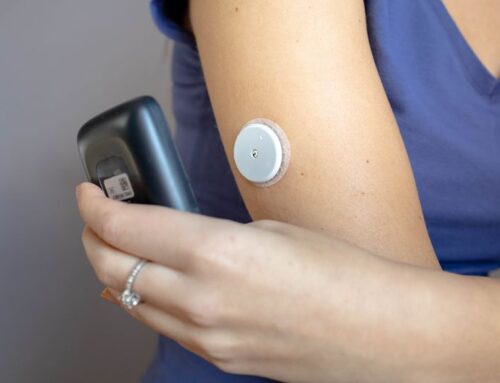If you have been looking for a metabolic reset, here is your moment!
It not only will help get you off the plateau you may have been on for many years, but in the process, you will increase Autophagy (the elimination, and digestion of old unwanted dead cells or part of cells, viruses, etc.), and increase immune function, healing your gut and optimizing brain function.
Highly recommended items to learn the most and succeed in fasting:
- Please order the Continuous Glucose Monitor (CGM). You will learn so much wearing this device, I promise you will be glad you did. If you are interested in getting a prescription for a CGM please call your provider or click on this link. NUTRISENSE
- Purchase this book for detailed explanations of everything below; Fast like a Girl by Mindy Pelz (even if you are not a girl.. you will still learn a lot from this book!).
- Ketosis strips from Amazon.
If you have never fasted:
Please start slow by going a 2-week pre-set fast:
Start with 13 hours of fasting daily, you can pick when you are fasting. If you can do this successfully without feeling “hangry”, weak, shaky, or headachy. Then you are ready.
If not then consider supporting your adrenals for 2 months and trying again. Your provider can guide you more specifically about this.
Test your fasting Ketones.
First thing in the morning your ketones should be approximately 0.2 (**you are in Ketosis if you are over 0.5).
Test your fasting Blood sugar:
First thing in the am: 70-90 is the ideal range.
Before you eat your first meal for the day:
Blood sugar should be lower than it was first thing in the am, before you have your first meal, in other works, it should be dropping.
Ketones should be rising. This means you are in a fasted state and your body is in fat-burning mode. You are not getting energy from the fat-burning energy system.
If you blood sugar elevates at any time during the fasting state, you will switch back to a sugar-burning system. Watching your CGM will give you clues as to when you go in and out of the sugar-burning system.
What can I have during a fast:
Coffee (with MCT oil, butter, or heavy whipping cream), herbal or black tea, and mineral water are beverages you can consume in the fasted state that won’t pull you out of your fast.
The diversity of your microbiome and the degree of insulin resistance you have will impact how you go in and out of a fasted state.
2 hours after you eat:
Scan your sensor to see what your blood sugar is. This will tell you how yo did with your meal, your ketones will be back down again since you have just eaten and are in sugar-burning mode again. Two hours after eating the goal is to have you blood sugar back down to where it was when you were fasting.
If you have resumed a fasting level you are insulin sensitive! If you are not there, keep going with the fasting and as you move in and out of the fasted states and differing lengths of fasts you will gain success with this.
You are training your body to be insulin sensitive and it takes time for your body to trust you and down-regulate receptors on the cell’s surface. Just hang in there, add more protein and fat to your meals to increase success with fasting.
The Healing Power of Fasting:
Intermittent fasting: 13 hours
Autophagy: 17 + hours
Gut Reset: 24+ hours
Fat Burner: 36 + hours
Dopamine Reset: 48 hours
Immune Reset more than 72 hours* please do not do this without being monitored by your
provider.
How to Fast if you are menstruating:
Day 1-10 : follicular phase
- Fasting length 13-72 hours*
- Best foods to break your fast with no more than 50 grams of natural carbohydrates such as
vegetables and greens, 75-90 grams of clean protein per day, and 60% of your food should be
coming from healthy fats (e.g. avocados, olive oil, olives, eggs, nuts, ghee, butter, nut butter). - Hormone focus: estrogen and insulin.
Day 11-15 ovulation phase
- Fasting length 13-15 hours
- Best foods to break your fast with: hormone feasting: cruciferous veggies, green leafy veggies, bitter lettuces, sesame, flax seeds, fermented foods, salmon. Blueberries, apples, green and dandelion teas.
- Consume no more than 150 grams of carbs per day, focus on veggies and fruits for carb sources, 50 grams of protein, and as healthy fats as desired.
- Hormone focus: estrogen, testosterone.
Day 16-19: Power phase
- Fasting length 13-72 hours*
- Best foods to break your fast with Natural carbohydrates such as vegetables and greens, 75-90 grams of clean protein per day, and 60% of your food should be coming from healthy fats (e.g. avocados, olive oil, olives, eggs, nuts, ghee, butter, nut butter).
- Hormone focus: estrogen and insulin.
Day 20- menses:
- No fasting: this is your time to focus on yourself, and get your needs met, care is a priority, and this is the nurture phase of your cycle. The more you balance/lower your cortisol the more progesterone you will have left over to help you feel calm and less agitated.
- Your body needs more glucose to make progesterone so this is as important as the fasting phases.
- Rest.
- Hormone focus: cortisol, progesterone.
- Healing focus; reducing cortisol.
- Best foods; foods that are a little more starchy: potatoes, beans, squashes (aka: comfort foods!) lentils, citrus fruits, pumpkin seeds, wild rice, brown rice, quinoa, tropical fruits, berries. Continue to focus on protein and good fats with the addition of a few more starchy items.
How do you fast if you do not have a menstrual cycle?
If you are not cycling or never had one, you can follow the below fasting recommendations;
Day 1-20 of the month: fast 13-72 hours*
Day 21-28: fast not fasting.
Follow the above fasting recommendations and re-feeding suggestions.
Consider fasting for 2 weeks and take a week of, then resume fasting as an alternative to the above guidelines. For longer fasts please ensure you are being monitored by your provider.
TIPS FOR SUCCESS:
- You must break a fast with protein and healthy fats.
- You must have MORE fate than you ever thought was necessary. Likely 80-90 grams but everyone is different. Your CGM will let you know if you need more fat or protein. Fat and protein put the breaks on glucose secretion which is the whole goal of this program. Keep your blood glucose between 70-120 as much as you can.
- Vary your fasting lengths. This is the way to get success and to feel your best. Do not do the same thing every day. Push yourself to go beyond where you went before and also fasting for shorter lengths is also very beneficial.
- Discover the best hours for you to skip eating. It might be very different for every person. Typically people fast beginning after dinner to the morning or early afternoon the next day.
- Even if you are not fasting, the benefits of the fasts you did earlier in the month are still at work with resetting your metabolism. Keep going. Do not be afraid to add more carbs into the second half of the month, this is important to prevent depletion of your glucose stores, replenish some that has been burned and to keep your metabolism ‘trusting’ you that you will continue to provide nourishment.
Benefits of fasting:
Weight loss
Insulin Resistance
Diabetes
PreDiabetes
Cardiovascular diseases
Autoimmune Conditions
Fatigue
Hormone imbalances
Memory challenges
Mood disorders
Hormonal cancers
Infertility challenges
Gut dysbiosis
Brain for
Low energy
Missed menstrual cycles
Detoxing from birth control
Lack of motivation
Hair loss
Thyroid challenges
Accelerated aging
Please always avoid these fats:
Partially Hydrogenated oils
Corn oil
Cottonseed oil
Canola oil
Vegetable oil
Soybean oil
Safflower oil
Sunflower oil



